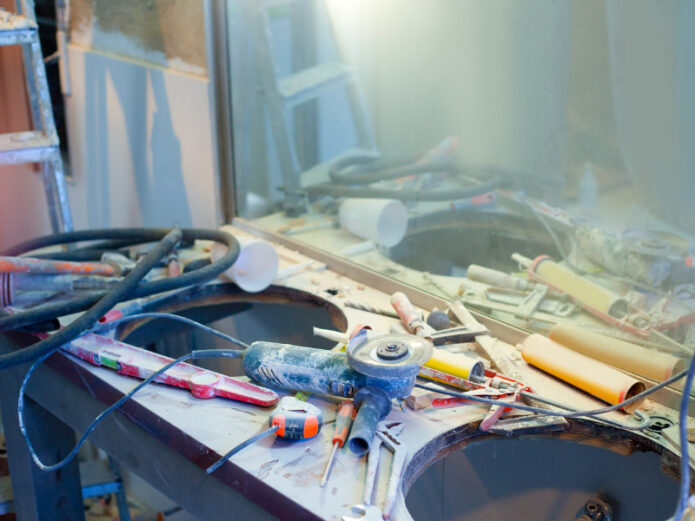The Long Goodbye: How Long Does Dust Take to Settle After Construction?
Anyone who has undergone a construction or renovation project knows that dust is an inevitable part of the process. As the project wraps up, one of the biggest concerns homeowners have is the time it will take for the dust to settle so they can start enjoying their newly renovated space. This blog post will delve into the question: how long does it take for dust to settle after construction?

The Dusty Aftermath
During a construction or renovation project, various activities like cutting, sanding, demolishing, and even just moving around materials can generate a significant amount of dust. This dust often contains tiny particles of wood, drywall, concrete, metal, and other building materials.
Once the construction work stops, these tiny particles begin to settle on every available surface. However, any movement in the room, a gust of wind, or even the simple act of walking can stir up these particles, causing them to become airborne and then settle again.
The Settling Time
The settling time of dust particles largely depends on their size. Larger, heavier particles will settle quickly, often within minutes. However, smaller particles, which make up the majority of construction dust, can take anywhere from several hours to a few days to settle completely.
In a room with still air (no movement or disturbance), it may take up to 2-3 days for dust particles to fully settle. But in a room with regular movement or air drafts, the dust can be continually disturbed, making it seem as though the dust never settles.
The Dusty Aftermath
During a construction or renovation project, various activities like cutting, sanding, demolishing, and even just moving around materials can generate a significant amount of dust. This dust often contains tiny particles of wood, drywall, concrete, metal, and other building materials.
Once the construction work stops, these tiny particles begin to settle on every available surface. However, any movement in the room, a gust of wind, or even the simple act of walking can stir up these particles, causing them to become airborne and then settle again.
Controlling Dust After Construction
While waiting for dust to settle naturally is an option, there are several steps you can take to hasten the process and minimize the impact of construction dust:
- Seal off the Construction Area: During the construction or renovation process, seal off the area as much as possible to prevent dust from spreading to other parts of your home.
- Air Purifiers and Filters: Use air purifiers equipped with HEPA filters to help capture dust particles and clean the air.
- Professional Cleaning: Once construction is complete, a thorough professional cleaning is recommended. This includes dusting, vacuuming with a HEPA-filter vacuum cleaner, and wet mopping floors and surfaces. This cleaning should ideally be repeated a few days after the initial cleanup to remove dust that settles later.
- Ventilation: Ventilate the area to help move dust out. However, be careful with this approach, as it can sometimes introduce more dust or other pollutants from outside if not properly managed.
Regular Cleaning: Even with thorough post-construction cleaning, more dust will likely settle over the following days. Regular cleaning will help keep this under control.
Conclusion
While the dust generated from a construction or renovation project can be a nuisance, understanding that it takes a few days for dust to settle can help set realistic expectations. Taking proactive measures such as sealing off the work area, using air purifiers, and arranging for professional post-construction cleaning can significantly minimize dust and expedite the cleanup process. With these strategies, you'll be well on your way to enjoying your new or renovated space dust-free!
